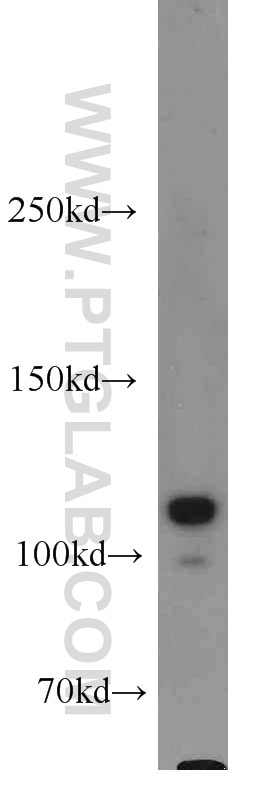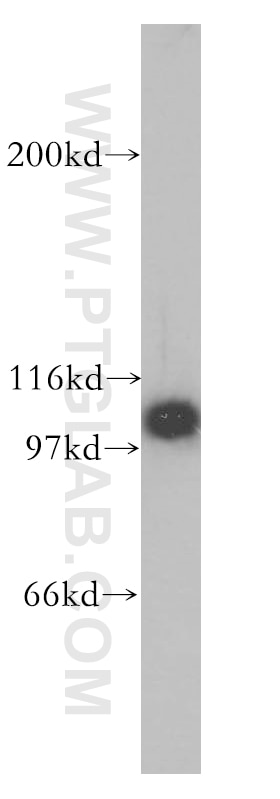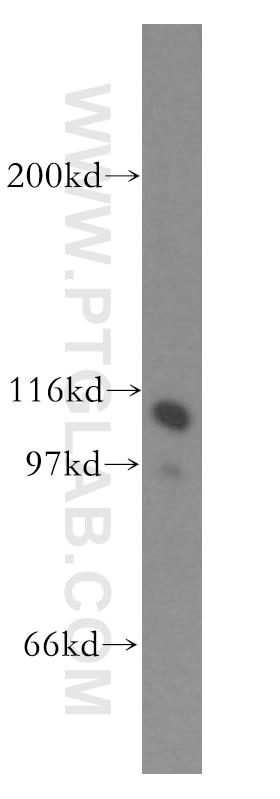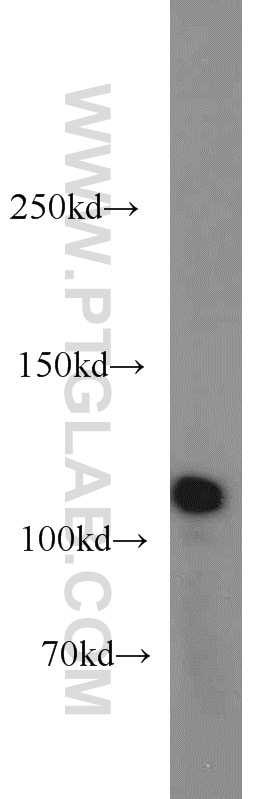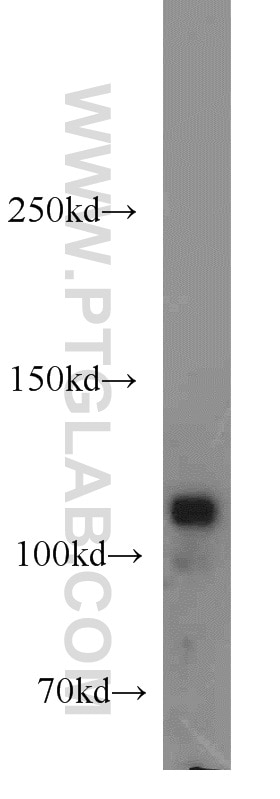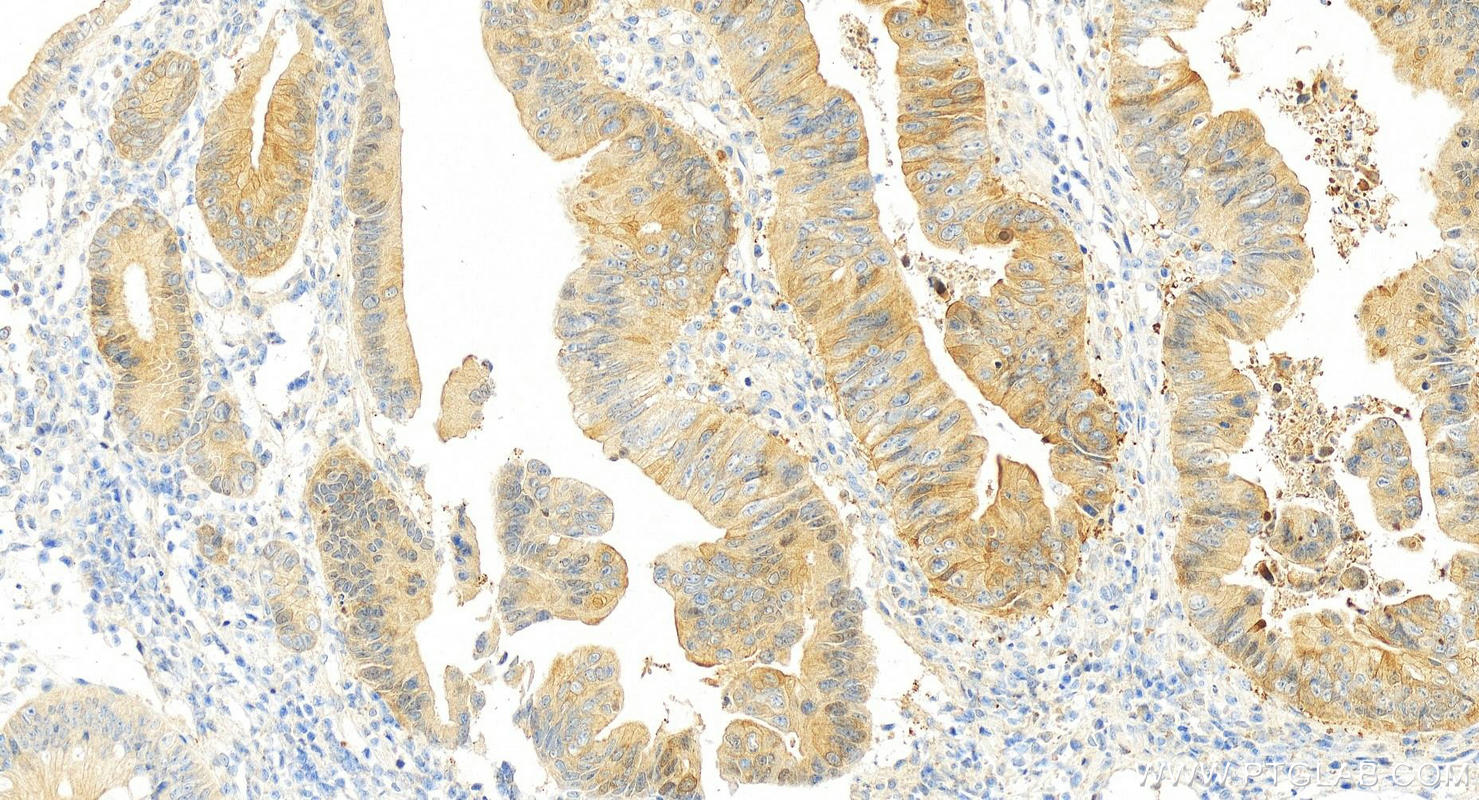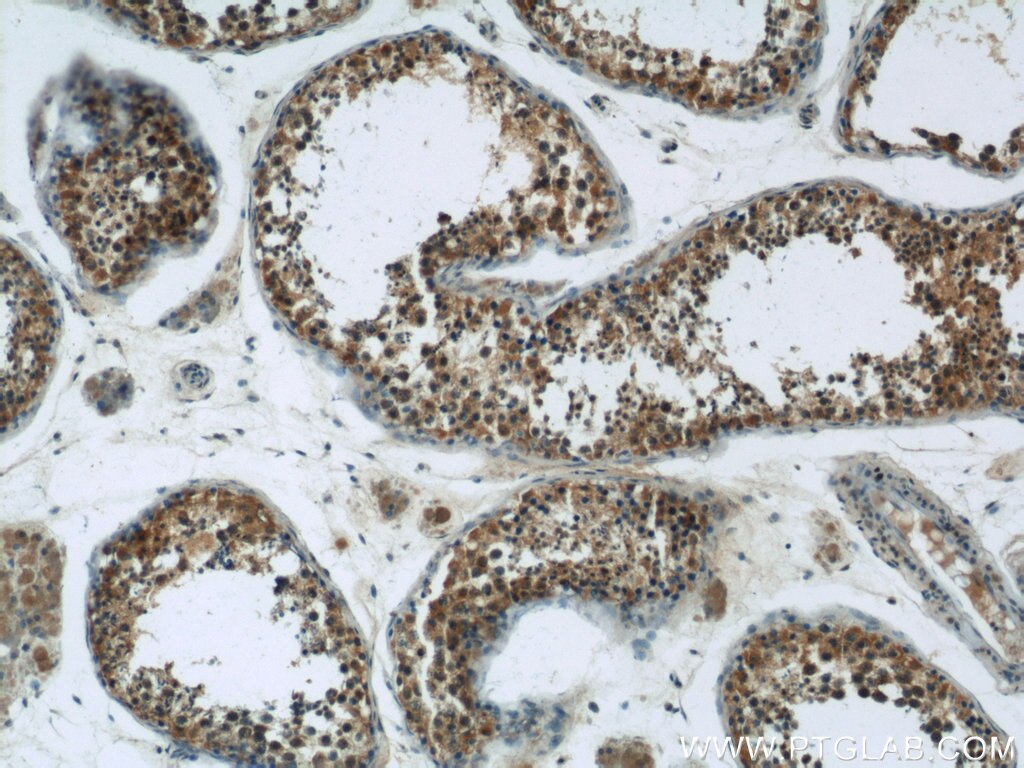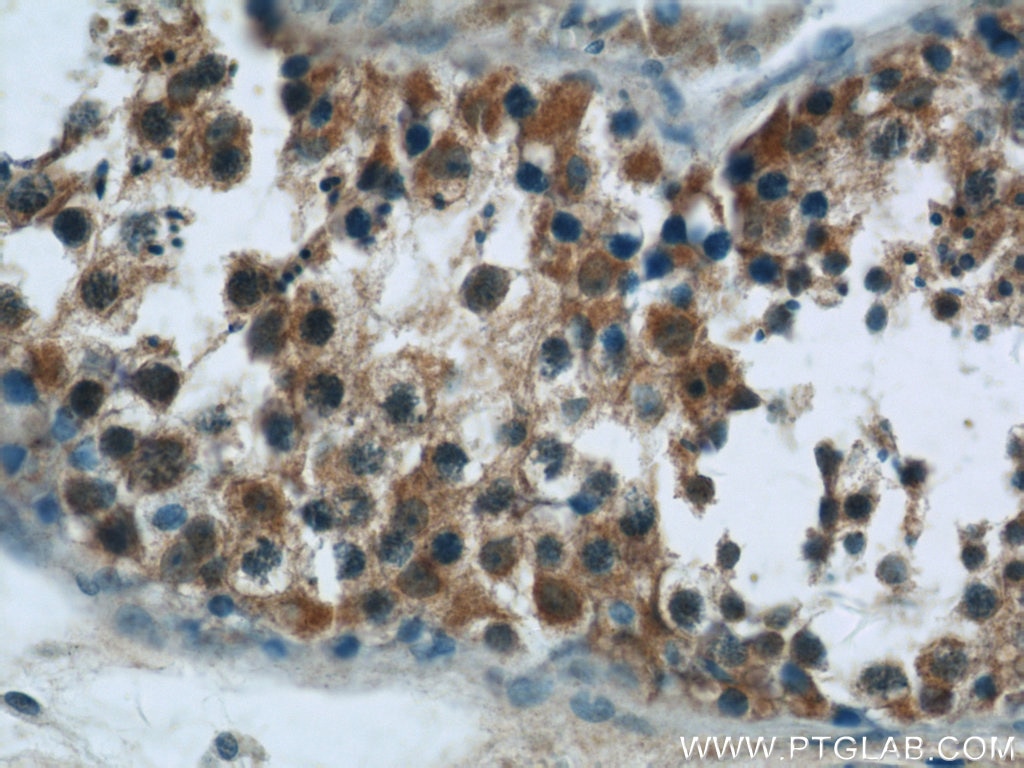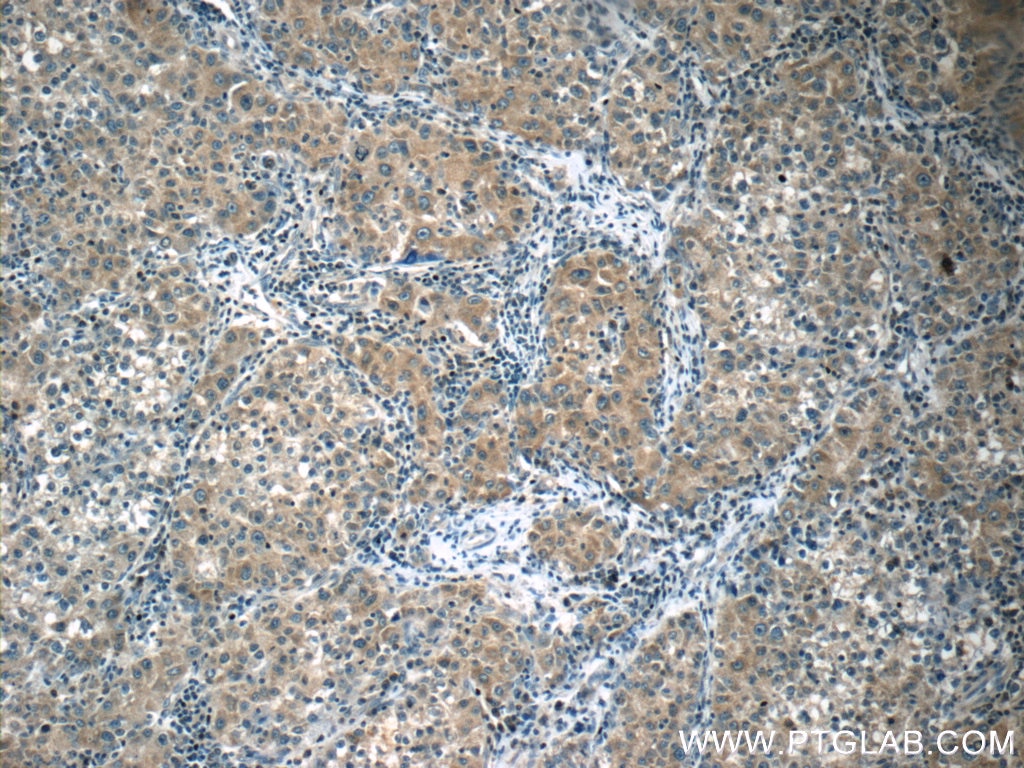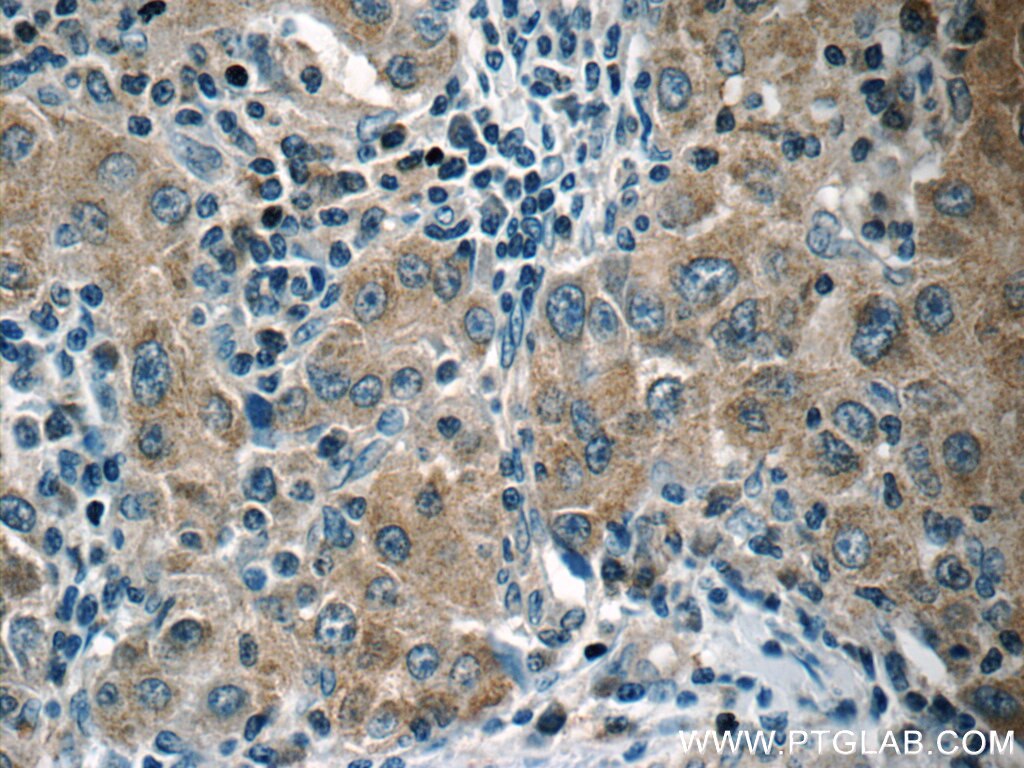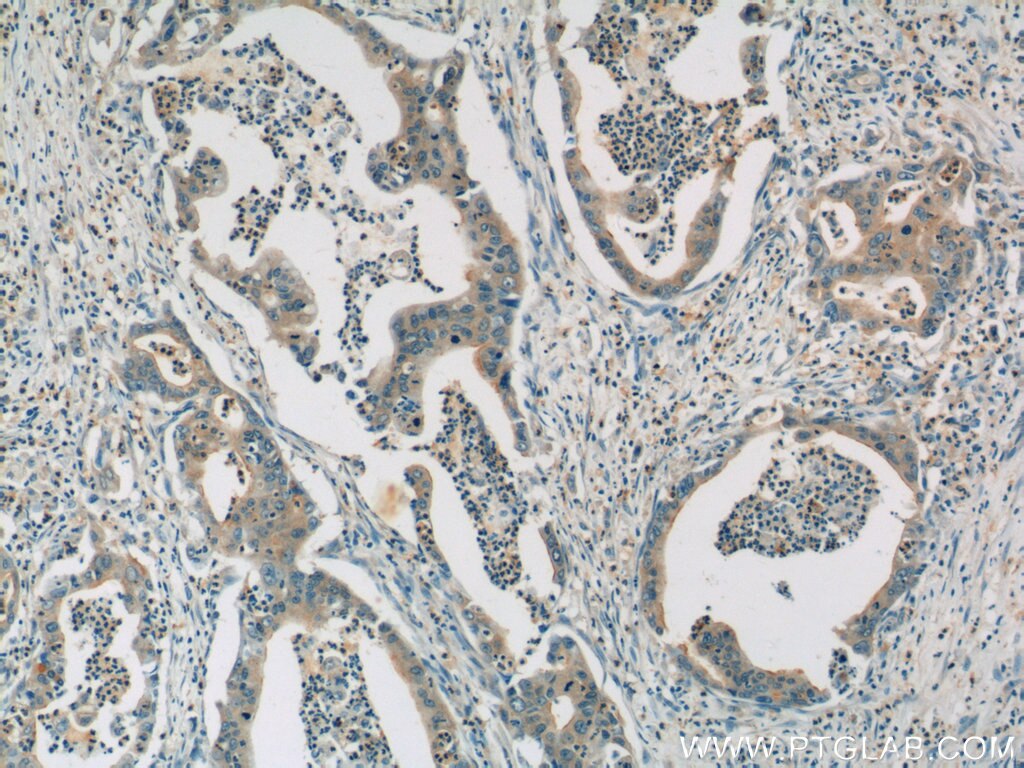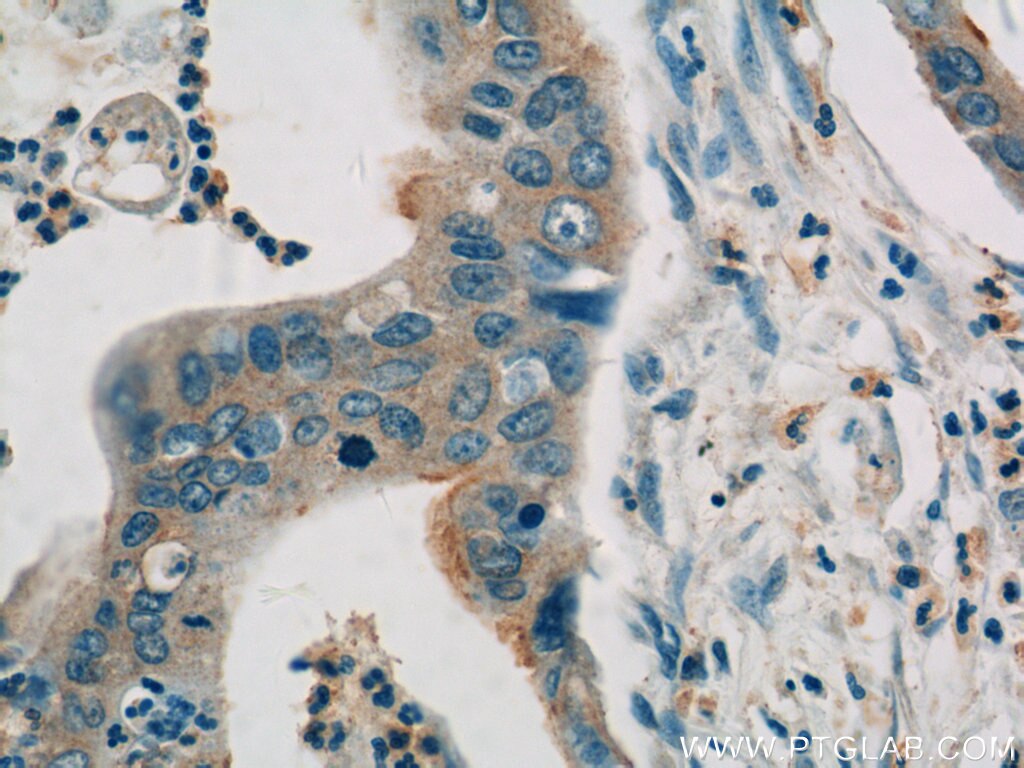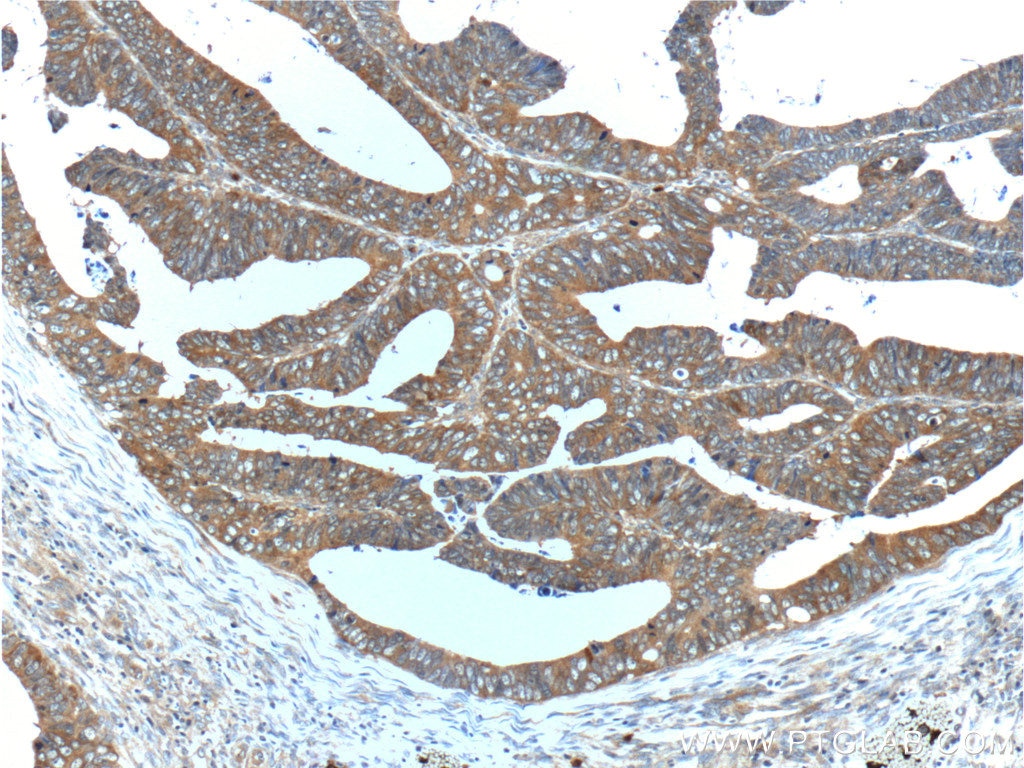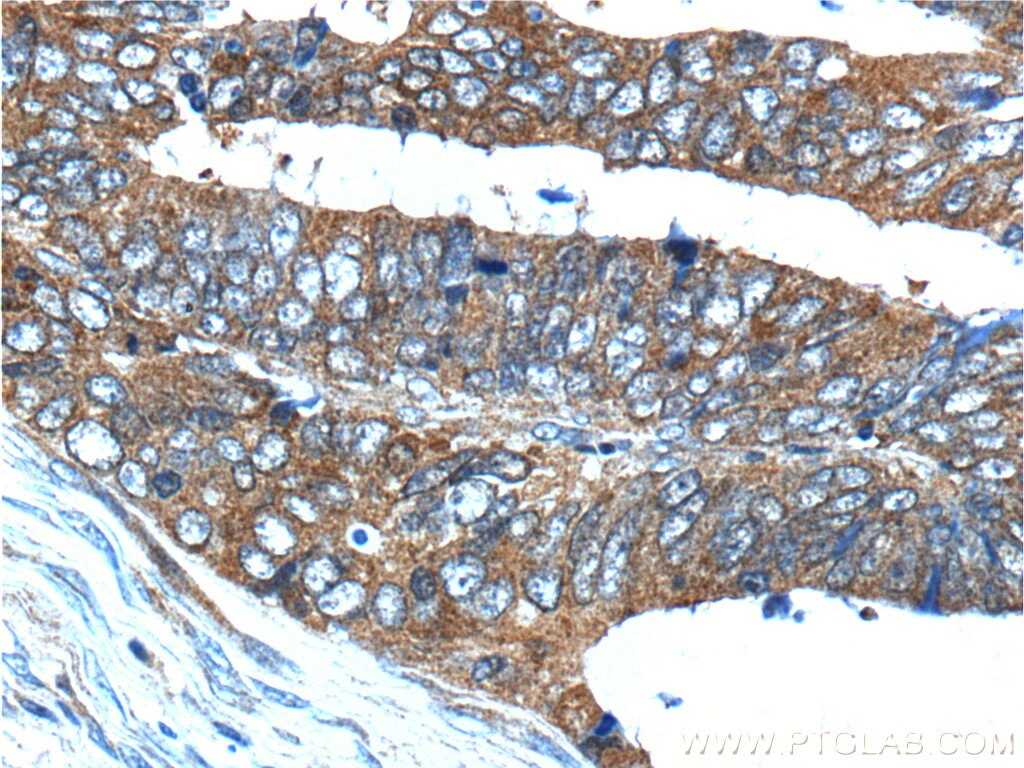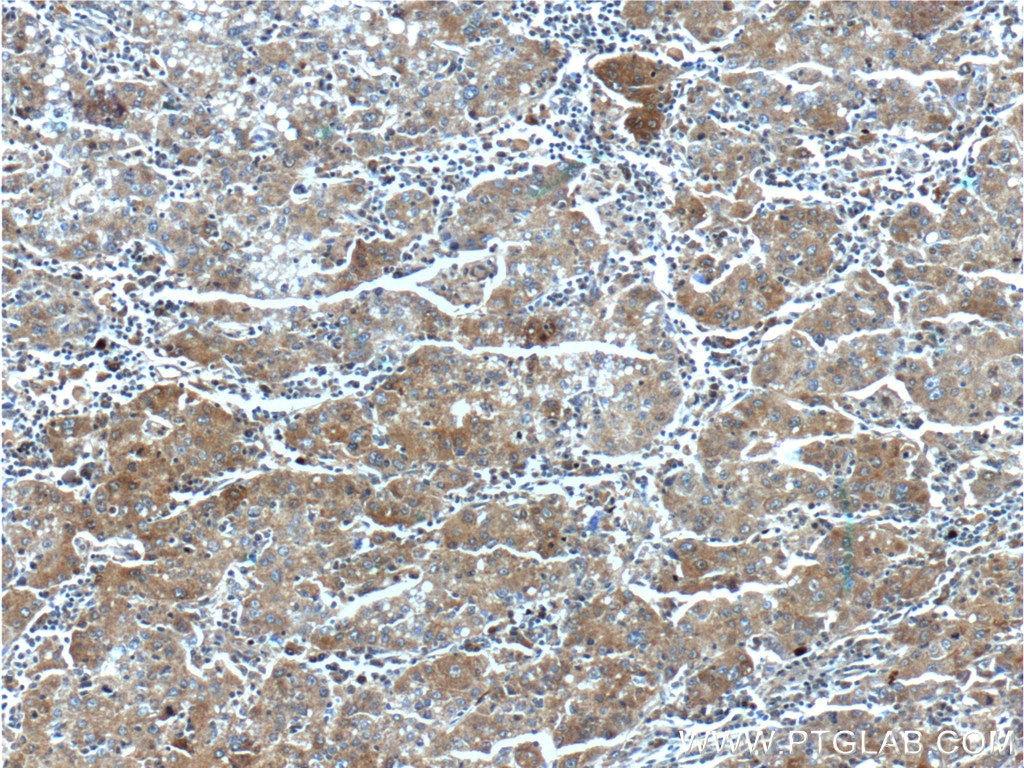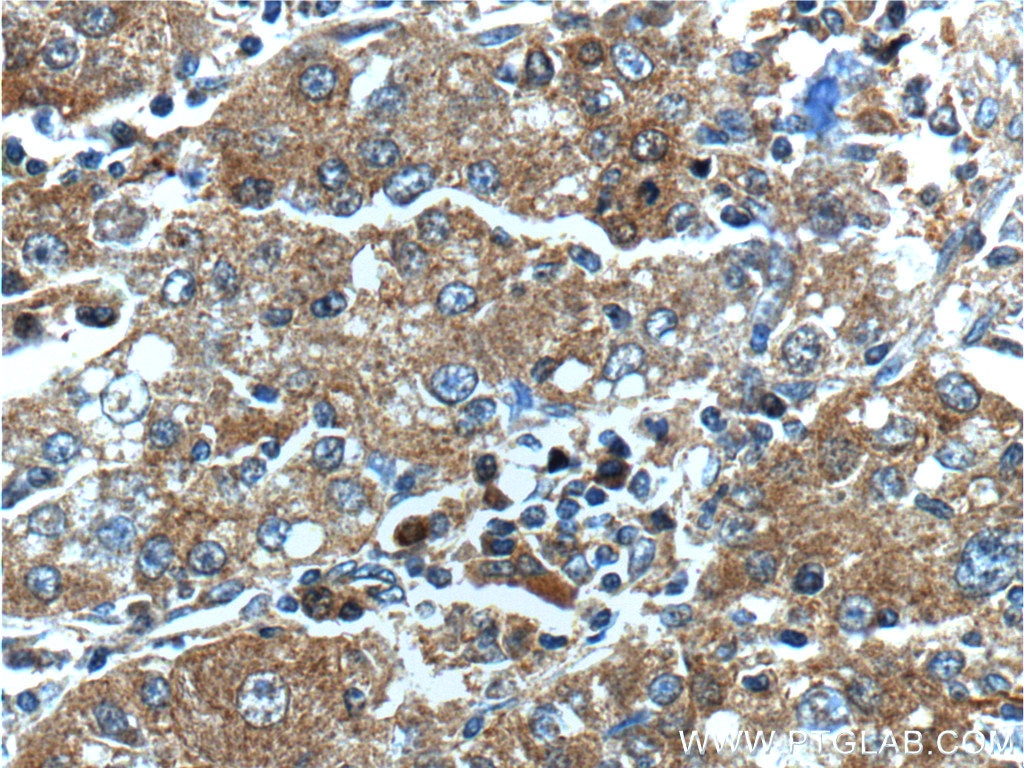Anticorps Polyclonal de lapin anti-HSPH1
HSPH1 Polyclonal Antibody for WB, IHC, ELISA
Hôte / Isotype
Lapin / IgG
Réactivité testée
Humain et plus (2)
Applications
WB, IHC, IF, ELISA
Conjugaison
Non conjugué
N° de cat : 13383-1-AP
Synonymes
Galerie de données de validation
Applications testées
| Résultats positifs en WB | cellules MCF7, cellules HeLa, cellules Jurkat, cellules K-562, tissu cérébral humain |
| Résultats positifs en IHC | tissu de cancer du côlon humain, tissu de cancer du foie humain, tissu de cancer du pancréas humain, tissu testiculaire humain il est suggéré de démasquer l'antigène avec un tampon de TE buffer pH 9.0; (*) À défaut, 'le démasquage de l'antigène peut être 'effectué avec un tampon citrate pH 6,0. |
Dilution recommandée
| Application | Dilution |
|---|---|
| Western Blot (WB) | WB : 1:500-1:2000 |
| Immunohistochimie (IHC) | IHC : 1:200-1:1200 |
| It is recommended that this reagent should be titrated in each testing system to obtain optimal results. | |
| Sample-dependent, check data in validation data gallery | |
Applications publiées
| WB | See 3 publications below |
| IF | See 4 publications below |
Informations sur le produit
13383-1-AP cible HSPH1 dans les applications de WB, IHC, IF, ELISA et montre une réactivité avec des échantillons Humain
| Réactivité | Humain |
| Réactivité citée | rat, Humain, souris |
| Hôte / Isotype | Lapin / IgG |
| Clonalité | Polyclonal |
| Type | Anticorps |
| Immunogène | HSPH1 Protéine recombinante Ag4224 |
| Nom complet | heat shock 105kDa/110kDa protein 1 |
| Masse moléculaire calculée | 858 aa, 97 kDa |
| Poids moléculaire observé | 110 kDa |
| Numéro d’acquisition GenBank | BC037553 |
| Symbole du gène | HSPH1 |
| Identification du gène (NCBI) | 10808 |
| Conjugaison | Non conjugué |
| Forme | Liquide |
| Méthode de purification | Purification par affinité contre l'antigène |
| Tampon de stockage | PBS with 0.02% sodium azide and 50% glycerol |
| Conditions de stockage | Stocker à -20°C. Stable pendant un an après l'expédition. L'aliquotage n'est pas nécessaire pour le stockage à -20oC Les 20ul contiennent 0,1% de BSA. |
Informations générales
HSP105, also known as HSP110 or HSPH1, belongs to the heat shock protein (HSP) family. Human HSP105 is a high-molecular-weight chaperone protein expressed at constitutively low levels as a cytoplasmic α-isoform and as an inducible nuclear β-isoform on exposure to various forms of stress. HSP105 is constitutively overexpressed in several solid tumors, including melanoma, breast, thyroid, and gastroenteric cancers, and exerts antiapoptotic functions. Recently HSP105 has been identified as a novel candidate biomarker of lymphoma aggressiveness. This antibody recognizes both HSP105α and HSP105β isoforms. Western blot analysis using this antibody detected a major band around 100-110 kDa in Jurkat cells.
Protocole
| Product Specific Protocols | |
|---|---|
| WB protocol for HSPH1 antibody 13383-1-AP | Download protocol |
| IHC protocol for HSPH1 antibody 13383-1-AP | Download protocol |
| Standard Protocols | |
|---|---|
| Click here to view our Standard Protocols |
Publications
| Species | Application | Title |
|---|---|---|
Nat Cell Biol Heat-shock chaperone HSPB1 regulates cytoplasmic TDP-43 phase separation and liquid-to-gel transition | ||
Dev Cell Nuclear import carrier Hikeshi cooperates with HSP70 to promote murine oligodendrocyte differentiation and CNS myelination | ||
Mol Ther Nucleic Acids Age-associated changes in microglia and astrocytes ameliorate blood-brain barrier dysfunction | ||
Mol Reprod Dev Identification of Hsf1 as a novel androgen receptor-regulated gene in mouse sertoli cells. | ||
bioRxiv Endothelial Cells are Heterogeneous in Different Brain Regions and are Dramatically Altered in Alzheimer's Disease | ||
J Neurosci Endothelial Cells Are Heterogeneous in Different Brain Regions and Are Dramatically Altered in Alzheimer's Disease |
